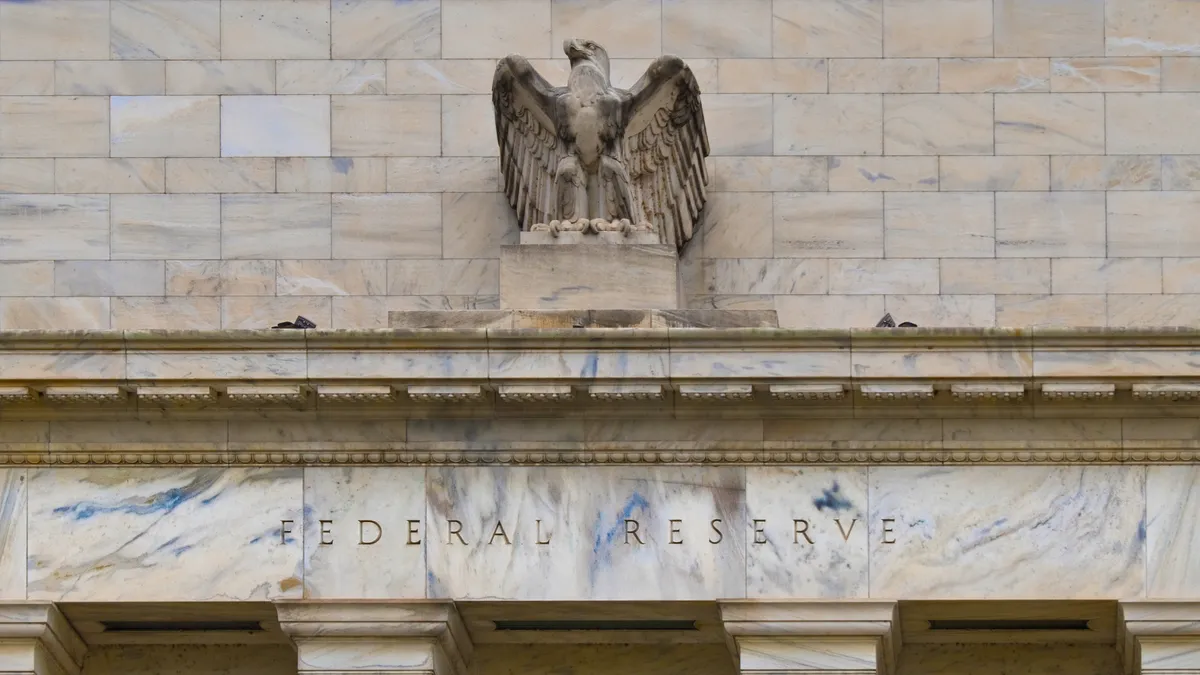Dive Brief:
- The Federal Reserve sought comment Thursday on a proposal to adjust its supervisory rating framework for big banks, making it easier for institutions to be deemed “well managed.”
- The framework focuses on capital, liquidity, and governance and controls; each component has four possible ratings: broadly meets expectations, conditionally meets expectations, deficient-1, or deficient-2. The Fed’s proposal would tweak the framework by considering a bank with no more than one “deficient-1” rating to be “well managed,” the central bank said Thursday.
- Fed Gov. Michael Barr, who voted against the proposal, and Michelle Bowman, the Fed’s vice chair for supervision, each issued a statement about what the proposed changes would mean, revealing “very, very different visions” of bank supervision, said David Sewell, partner and U.S. head of the financial services regulatory practice at law firm Freshfields.
Dive Insight:
The large financial institution framework applies to domestic firms with $100 billion or more in assets and foreign banks with $50 billion or more. While capital and liquidity are quantitative measures, governance and controls represent a more subjective category.
The changes “would better align the supervisory rating framework with and more accurately reflect the strength of bank holding companies and the banking system as a whole,” the Fed said, and with supervisory rating systems used for other banks, such as CAMELS ratings.
A bank with a deficient-2 rating for either capital, liquidity, and governance and controls would continue to be considered not “well managed,” consistent with the current framework, the Fed said. The Fed board expects the proposal could cut the number of not “well managed” bank holding companies by eight, from 23 to 15, according to the Fed’s release.
While most U.S. banks receive high ratings for the financial metrics, “where they tend to have more struggles is on the management and governance factors,” Sewell said.
Bowman said the proposal is “the first step in pursuing a broader goal, which is to ensure that supervisory activities, and the accompanying ratings, are aligned with a renewed supervisory focus on core, material financial risks.”
Under the current framework, Bowman noted, about two-thirds of big banks are not considered “well managed” even though their capital and liquidity levels are substantially above what regulators require. That’s because the “well managed” label is based on a single deficiency in a single rating component, instead of a more comprehensive consideration, she said in her statement.
The proposal would require a deficiency in either a bank’s capital or liquidity ratings, in addition to a deficiency in its governance and controls, to be designated not “well managed.”
“In this way, the proposal would provide greater recognition of a firm's overall condition in determining well-managed status,” Bowman said. “By addressing this mismatch between ratings and overall firm condition, the proposal adopts a pragmatic approach to determining whether a firm is well managed.”
Barr, however, dissented, saying the proposal “would fundamentally change the long-established concept of well managed” and undermine big bank supervision “by effectively allowing firms that are not well managed to be treated as though they were.”
“Firms that are not in satisfactory condition would be allowed to undertake activities that only healthy firms should undertake,” such as acquisition, “which increases risk to individual banks, consumers, and the financial system,” he said in a statement.
With the proposed change, banks could have serious deficiencies in cybersecurity controls, anti-money laundering and anti-terrorist financing systems, or in consumer compliance programs, and still be rated “well managed,” warned Barr, the previous vice chair for supervision.
Gov. Adriana Kugler abstained from voting. Kugler and Gov. Lisa Cook, in their statements, both supported the idea of adding a composite score or measure to the framework, as a more comprehensive approach.
The proposal would mark a fairly significant change early in Bowman’s tenure, Sewell said. “What that signals to me is that she means business, and I think we can expect more changes like this, and particularly measures the Fed can take to focus supervision on material financial risks as opposed to other considerations,” he said.
Bowman said she expects the board “will continue to evaluate whether additional changes to our ratings systems are warranted,” such as adding a composite rating and revisiting the weighting of the management and risk management components in the CAMELS and RFI frameworks when determining a firm’s composite rating.
The central bank’s board also proposed making similar alterations to its supervisory rating framework for insurers regulated by the Fed. Comments on the proposal are due 30 days after it’s published in the Federal Register.













